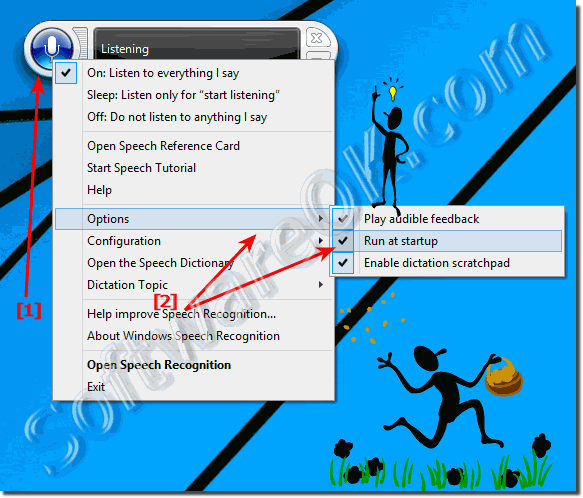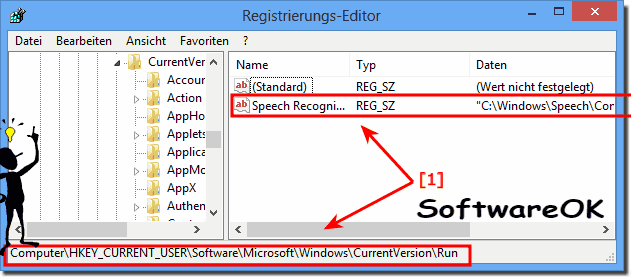
- #DISABLE SPEECH TO TEXT WINDOWS 10 HOW TO#
- #DISABLE SPEECH TO TEXT WINDOWS 10 PRO#
- #DISABLE SPEECH TO TEXT WINDOWS 10 DOWNLOAD#
(Click to enlarge the screenshot below.)Ĥ. With Regional and Language Options expanded, double-click on Allow users to enable online speech recognition services. (Click to enlarge the screenshot below.)ģ. Using the left pane of the Local Group Policy Editor, navigate to Computer Configuration > Administrative Templates > Control Panel > Regional and Language Options.
#DISABLE SPEECH TO TEXT WINDOWS 10 HOW TO#
This tutorial shows you all the different ways in which you can open the Local Group Policy Editor when using a version of the Windows 10 operating system: How to Open Local Group Policy Editor in Windows 10 Ģ.
#DISABLE SPEECH TO TEXT WINDOWS 10 DOWNLOAD#
Here you can download the files to enable online speech recognition and disable online speech recognition should you wish to use them.ġ. So it is best only to use the Windows registry files if you do not have access to the Local Group Policy Editor. This means you will be adding extra files to your computer, which invariably takes up hard drive space. You can instead download a Windows registry file so the changes are automatically saved on your computer via the registry file itself.You can only use the Local Group Policy Editor when using Windows 10 Pro, Windows 10 Enterprise, and Windows 10 Education editions.You can enable and disable the online speech recognition from the Local Group Policy Editor in Windows 10. How to Enable/Disable Online Speech Recognition in Local Group Policy Editor Please Stay tuned for more such tips and tricks.The following tutorial demonstrates how to enable or disable speech recognition in Windows 10. Kindly comment and let you know the fix that helped you. We hope this article has been informative. Step 10: In order to enable Online Speech recognition, delete the Registry key AllowInputPersonalization. Step 9: In order to Disable Online Speech Recognition, set the value to 0 and click on OK Step 8: Double-click on AllowInputPersonalization to modify its value. Step 7: Name the newly created key AllowInputPersonalization. Step 6: On the right-hand side, right-click on an empty area and then choose New>DWORD(32-bit)Value. Step 5: From the left-hand side, double-click on the InputPersonalization folder.

Name the newly created key as InputPersonalization NOTE: If you cannot see the InputPersonalization folder, you can create one. Step 4: In the Registry Editor window, on the search bar at the top, copy-paste the following location HKEY_LOCAL_MACHINE\SOFTWARE\Policies\Microsoft\InputPersonalization To take a backup, In the Registry Editor–> Go to File –> Export –> Save your Backup file. It is advised to take the backup of the registry before proceeding. Registry editing can harm the system even with the slightest mistake.


Step 3: In the UAC window that opens asking for permissions, click on Yes Step 1: Open the Run Dialog using the keys Windows+R Step 7: Click on Apply and then click on OK. Step 6: In order to Disable Online Speech recognition services, click on Disabled or Not Configured.

Step 5: In order to Enable Online Speech recognition services, click on Enabled. Step 4: Double-click on Allow users to enable online speech recognition services. Computer Configuration\Administrative Templates\Control Panel\Regional and Language Options\ Simply double-click on the section to expand the selection. Step 3: In the Local Group Policy Editor window that opens, from the left-hand side, navigate to the following location. Step 1: Open the Run Command Window using Windows+R. This does not work in Windows 10/11 Home versions.
#DISABLE SPEECH TO TEXT WINDOWS 10 PRO#
NOTE: Group Policy Editor is available only in Windows 10/11 Pro versions. However, if you see the option greyed out, try out the below two methods. NOTE: Windows Users can enable or disable the Online Speech Recognition from Settings.


 0 kommentar(er)
0 kommentar(er)
